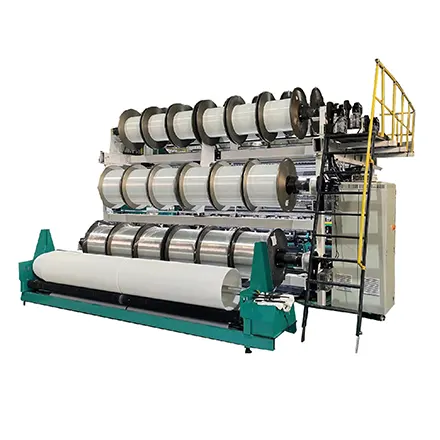HighDistance
The High-Distance Spacer Machine is designed to create spacer fabrics with higher thickness range possibilities while keeping structural integrity and uniformity consistent. Its built structure provides high quality outputs for complex through the sophisticated control systems technology. This machine is useful in industries where spacer fabrics are used for coming with support, cushioning, and for cases where the fabrics are required to allow free flow of air.
Key Features of High-Distance Spacer Machine
Here are the key Features of High-Distance Spacer Machine:
- Precision Engineering
Most frequently connected to computerized systems for computerized control of real-time settings and precision manufacturing.
Speed is maximized without the tendency to impair efficiency – owing to the high speed of the equipment.
- Customizable Design
Adjustable friction surfaces for accommodating variation in fabrics thickness, texture and material content. It accommodates various types of yarn including technical and specialist types.
- Enhanced Yarn Management
Some of these features include; advanced yarn feeding and tension control system to enhance ease in operations. Several positions for warp beam to provide flexibility in moving materials round thus reducing time taken to load material.
- Energy Efficiency
Originally developed for energy conservation and has made contribution to solving the sustainable production problem.
Applications of High-Distance Spacer Machine
- Automotive Industry
Cloth for spacer, which makes car seats comfortable and has excellent air circulation for headrests and interiors.
- Medical Textiles
Comzy, soft and friendly as well as flexible & ventilated fabrics to be used in orthopedic products and health care.
- Sports and Activewear
Textiles used for footwear, backpacks, and athletic wear where endurance and breathability is desirable.
- Industrial Applications
High tech spacer fabrics to be used in filtration, insulation, protective clothing, hat and gear among other areas.
- Furniture and Bedding
Textile space for mattress and cushion as well as for ergonomically designed furniture as part of comfort and ventilation needs.


